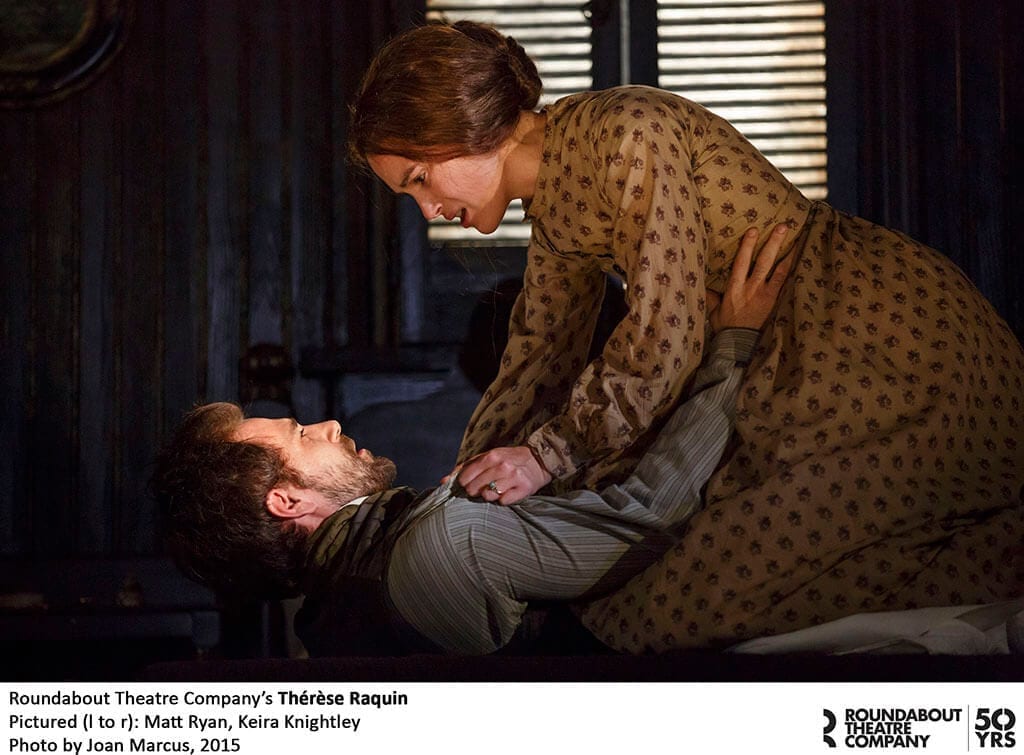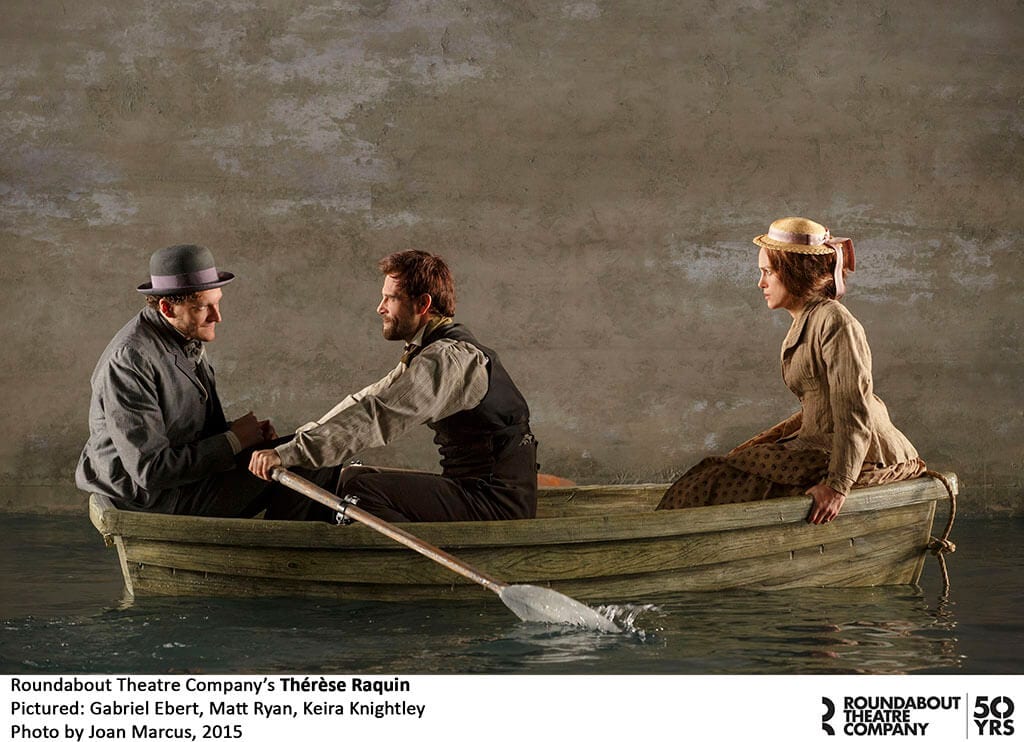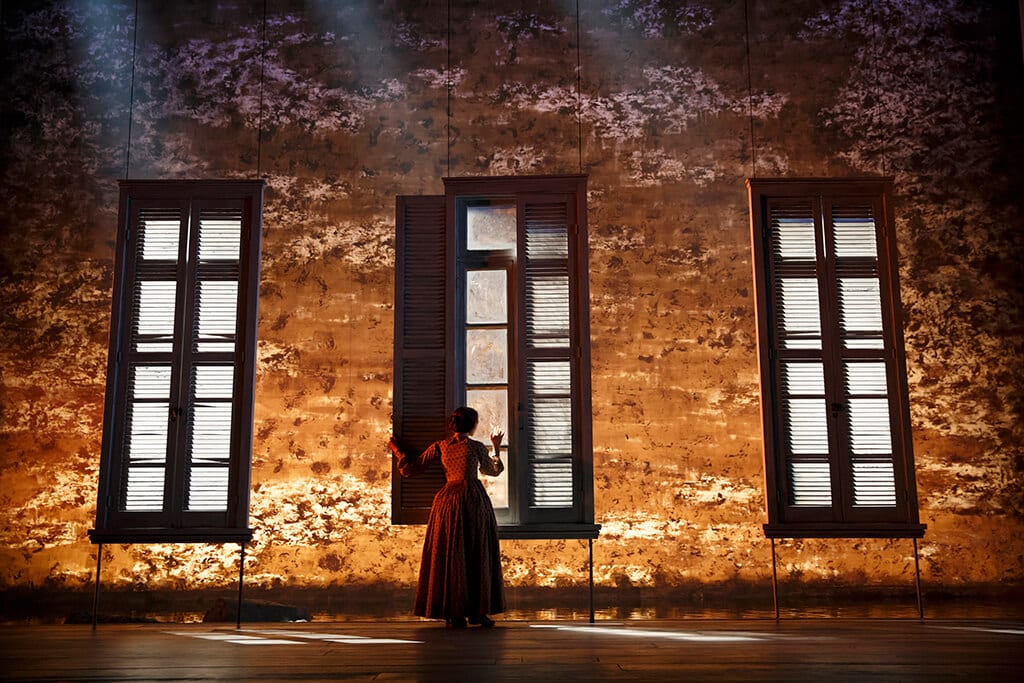Lust, murder, and terror Playbill promises this new adaptation of Emile Zola’s 1867 novel will deliver. Indeed, it’s served up with all the trimmings. The sex is unflinching (without nudity, raising questions about whether they really did it like that back then). The murder is vivid, heart-rending, all too unforgettable. And the terror is ultimately what the play is all about. But it’s better than that.
Thérèse Paquin is very simply structured, with barely a B plot. The orphaned Thérèse (Keira Knightley) has been raised in a village outside Paris by her resourceful, respectable aunt (Judith Light), alongside Thérèse’s spoiled, cheeky, manchild cousin Camille (Gabriel Ebert). Its beginning seduces with quaint details of French country life from another time (lavender scent in a bottle!). It has a clear mechanism of tension as Thérèse and Camille are thrown together in a sparkless marriage. A sexy complication ensues when an attractive insider/outsider is introduced, Laurent (Matt Ryan), known previously by the family. Terrible secrets are played out behind a charming, civil foreground (Thursday domino night with the guests!). And there is a shattering ending, no less so for its inevitability. But executed this well–with psychological realism, dashes of wit, and splashes of earned passion–it’s not just a four-square well-made drama. It’s better than that.
Gabriel Ebert plays Camille captivatingly, with quirky, guileless charm. We can only take pleasure in his complete cluelessness about his irritating behaviors. Judith Light is all bustle, care, and hospitable duty as Madame Raquin, and finally she is our deeply human proxy bearing wet-eyed witness. Matt Ryan hits his marks as the morally flawed lover Laurent, too stiff in social settings, contrasting with unbridled private behavior.
The one odd choice is Knightley’s. We see Thérèse enduring her long, long silences as a tightly coiled, feral creature on high alert. She seems mentally prepared at every moment for a life-crushing swipe from a lion’s paw. It’s a strong choice, one that holds our interest completely. But while it serves the suspense, it doesn’t really make any sense. Her behavior suggests someone who has suffered long-term, randomized abuse, but the evidence suggests she has been smothered only by relentless bourgeois conventionality. Thérèse tells Laurent she has been deadened every day by life with the Raquins. Yet she seems as alive as a marmoset. And, like the way none of the straight characters notices how oddly Groucho behaves in a Marx Brothers movie, no one seems to notice Thérèse’s darting, furtive, monosyllables. Isn’t she a dear? It pays off powerfully many times, especially in the stormy unraveling of all, all, all in the play’s conclusion. Her terror earns our pity. But there are psychological steps missing.
With twenty-odd scene changes (guessing)–from provincial to gloriously natural to claustrophobically urban to magically alone in an attic–Set Designer Beowulf Boritt takes the audience on a stunning visual journey, setting up and defying expectations again and again. It’s all going to be very spare, essentially a color-field masterwork with a few suggestions of architecture and furniture. No, it’s boxed-in realism. No, it’s not; it’s better than that. There’s a shimmer of water, no a stream, no, it’s better than that.
Similarly, Thérèse Paquin is a well-made old chestnut. No, it’s better than that.





